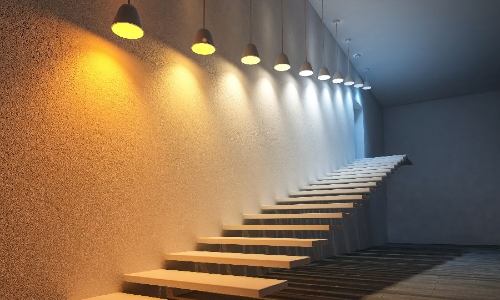What is circadian lighting?
If you’ve been exploring the lighting category for any length of time, you may have come across this term, or at least the trace inklings of it, and wondered that very question.
What circadian lighting is can be straightforward. If a product is talking about mirroring natural lighting, chances are it’s talking about circadian lighting, however, that remains a very shallow explanation as to what it is seeking to do.
So, in this article, we’re going to dive into the specifics of circadian lighting, why it’s receiving the attention it is, what it does for human health, and how you can begin to craft these systems either as part of your business, or for your own home environment.
What is Circadian Lighting?
The ‘circadian’ part of circadian lighting refers to the circadian rhythm. This is the biological clock that the human body uses to delegate when it’s time to sleep and when it’s time to wake up. Normally, that clock runs on a 24-hour cycle that is governed by the natural day and night cycle.
That’s the way our bodies worked for eons, and unfortunately, despite the immense amount of time that has passed between humans sleeping beneath the open sky and today, that isn’t enough time for our bodies to evolve new mechanisms for determining sleep-wake cycles. Our bodies still rely on specific cues from the light in our environment to tell us what time it is.
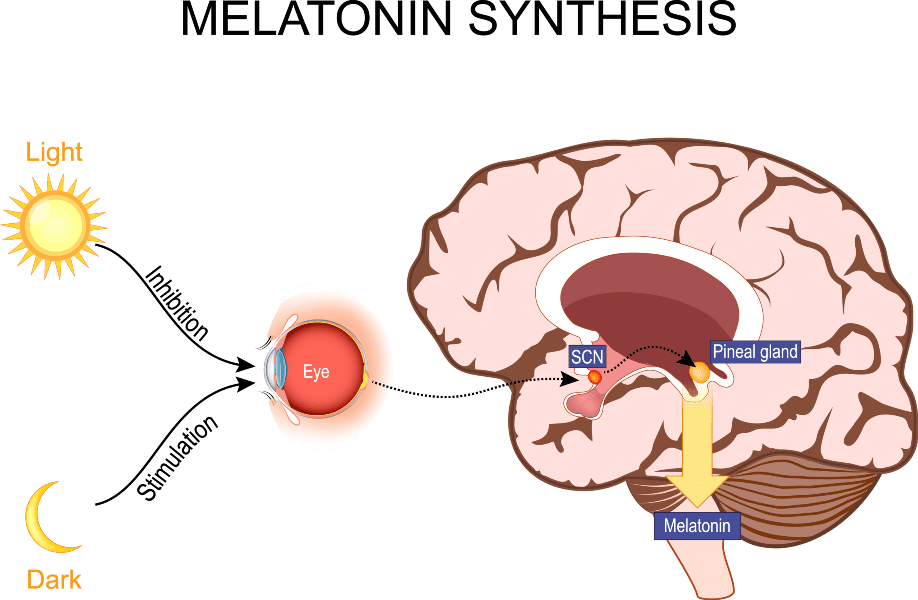
These cues include the position of the light, the color temperature, its brightness—any changeable quality that can be seen in the sun. At the end of the day (no pun intended) the sun has been the most constant light source humans have ever had.
What circadian lighting is at its core, then, is an attempt to use the changeable properties of LEDs to mimic the natural progression of sun throughout the day.
The reason why it is called circadian lighting is because its end goal is to help the residents of buildings maintain that natural sleep schedule where natural light sources are limited. Think ‘brighter days and darker nights,’ and you have the goal of circadian lighting.
Any good circadian lighting system is going to create a strong daytime (awake) signal in the morning while eliminating it at night.
What is Correlated Color Temperature?
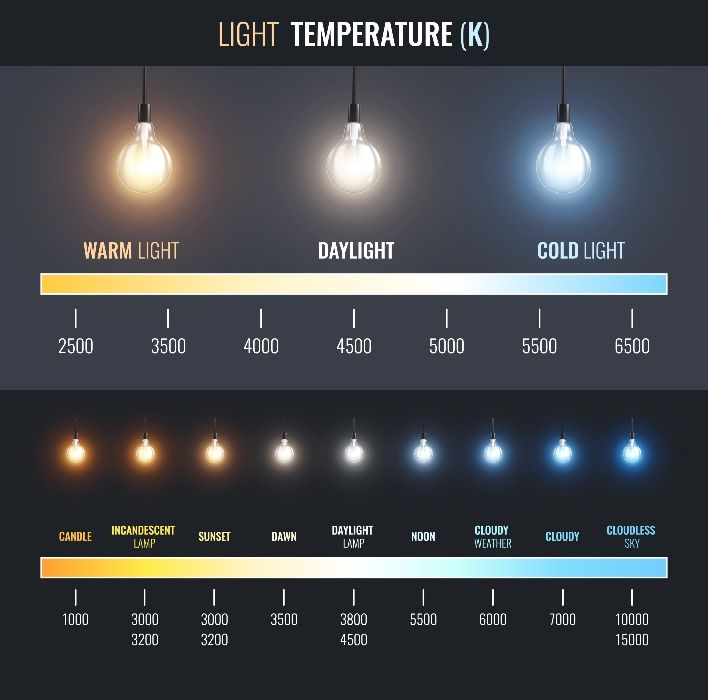
In the above section I mentioned something called color temperature. Color temperature, relates to how eyes perceive certain tones of white light and this relates back to the color of sunlight at different points of time throughout the day.
Correlated color temperature (CCT) refers to the specific color wavelength a light puts out, measured in degrees Kelvin (K). This is the measurement you will see constantly to describe the color output of light, and it ranges between 1000K – 10000K with the lower temperatures representing warmer, redder lights while the higher temperatures represent cooler, bluer colors.
It may sound counterintuitive at first, but picture it in the way a flame burns. A red flame is the coldest flame possible and therefore has the lowest temperature while a blue or pure white flame has a very high temperature. The relative descriptors of warm for red and cool for blue are a little confusing given that description, though.
How Modern Lighting Affects Our Circadian Rhythm
With that in mind, let’s look at how an average light bulb with a fixed CCT might be harmful for one’s circadian rhythm (though a recent study has begun to question how much blue light might imp
Say you’re in an office, and the lighting in that office is set to 4,500K–a good color temperature for daytime activities as it helps stimulate alertness and attentiveness. If you were exposed to mostly natural light, that color temperature would eventually start to shift into a warmer tone, signaling your body to slow down and get ready for rest.
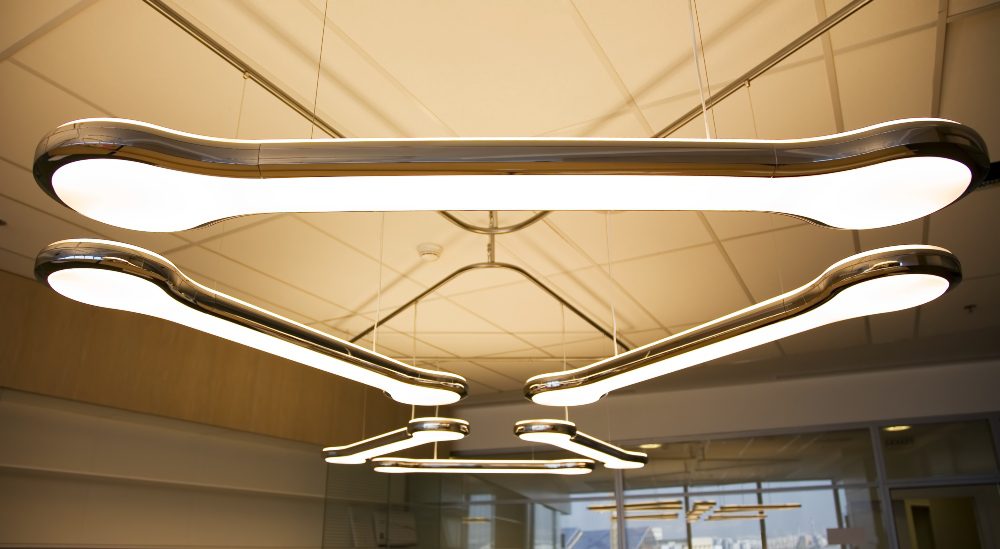
However, with this fixed color temperature the body has no reference point of when to slow down or stop. It can be well into the evening as you’re doing a little extra overtime and your body will still think it’s 10 in the morning.
Because your body thinks it’s 10 in the morning, it halts melatonin production. Melatonin is what your body uses to go to sleep, so if there’s no melatonin, there’s no gradual layering into sleep which may cause you to go to sleep later. Go to sleep later, wake up later feeling less refreshed: it’s a vicious cycle.
This doesn’t have to occur exclusively in an office. Most people only spend roughly 10% of their day outside. This means 90% of the day is being spent deprived of natural lighting which in turn deprives the body of an important stimulus in regulating the sleep/wake cycle with most modern lighting not providing the proper signals as a replacement.
A poor sleep schedule, or lack of sleep in general, can transfer into issues such as fatigue, but a lot of people don’t realize that sleep also helps regulate our metabolism and cortisol levels. Sure, a bad night’s sleep can make it more difficult to navigate one’s environment, but it’s those other factors that make sleep disruption lead to weight problems or mood disorders.
Benefits of Circadian Lighting
As lighting to optimize circadian health continues to gain popularity, more and more research is being put into better understanding our relationship with lighting. Hospitals, nursing homes, offices, and residential communities have all begun to incorporate circadian lighting where they can to the benefit of occupants therein.
In the office, circadian lighting has been shown to promote productivity, with studies citing an increase in occupant energy and vitality. In nursing homes, circadian lighting has been shown to reduce the number of falls from seniors with an increase in focus and awareness being the success factor there.
There’s also the fact that, since sleep is tied to hormone production, circadian lighting is tied to helping promote a better sense of wellbeing within building occupants.
How Circadian Lighting Works to Correct the Sleep Schedule
Just as circadian disruption is a gradual process that throws one’s sleep schedule out of alignment, circadian lighting works gradually over time to correct that. This is done through entrainment, or a stimulus delivered to the body at the right moment on a consistent basis. We already talked about color temperature, but circadian lighting focuses on a variety of visual and non-visual stimuli for entrainment.
What circadian lighting seeks to correct in artificial lighting includes:
- Color temperature (CT)
- Intensity
- Positioning
- Timing
- Spectrum
In the scope of circadian lighting, the lower color temperatures represent light at early morning and late evening while the higher color temperatures are daytime conditions. To paint a more precise picture, the average CCT of sunlight throughout the day ranges from 2700K to roughly 6500K.
This is the range that circadian lighting will often try to stick to with the lights being dimmed and brightened accordingly depending on the time of day. It’s not enough to have warm lights in the evening, it needs to be a dim, warm light. It’s not enough to have a single point of exposure of sun-like light, it needs to happen over the course of an entire day.
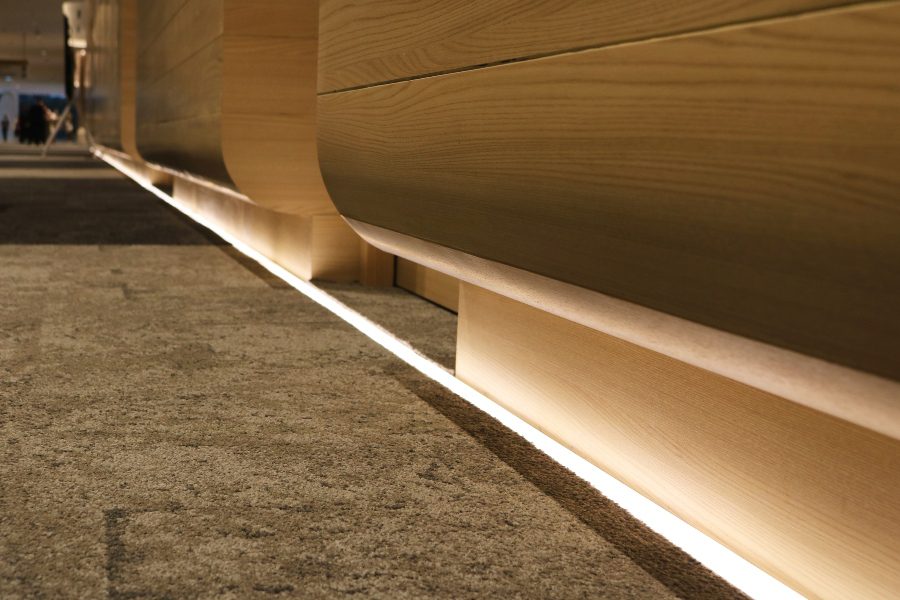
There’s also the positioning aspect. We talk about it at length in an article discussing the design aspect of circadian lighting, but to summarize it here, our eyes also respond to where the light comes from physically. Overhead lighting hits the melanopsin pigment in the lower back part of the eye, which in turn delivers a stronger waking signal to the brain.
The positioning of this photosensitive pigment makes it better to set night lights below eye-level so as to avoid triggering a melanopsic response.
There’s also the intangible aspects that circadian lighting seeks to control, with spectrum being one of the lesser known features in a successful installation.
What is CRI?
While color temperature is one of the most popularized aspects of circadian lighting, spectrum just as, if not more crucial. Researchers over the years have discovered that melanopsin is most sensitive to 490nm light—the same wavelength as sunlight.
Many researchers call this stimulus the “sky-blue signal,” but the important thing to note is that not all LED lights replicate this signal. Most artificial lights use 450nm wavelengths of light, meaning, you can be doing everything else right with your circadian lighting and still receive no response.
For a while, the Color Rendering Index (CRI) has been used to determine how proficient an LED is at recreating the same light spectrum as the sun by comparing how colors look to human eyes when exposed to its light. When a light has a CRI of 100, that means it is indistinguishable from sunlight. If a light has a CRI of 75, that means it is 75% effective at recreating sunlight.
For CRI, anything above 90 is what you want for circadian lighting.
However, the issue there is that some manufacturers may use blue or ultraviolet wavelengths to bump up the CRI of the bulb, leading to at best, further disruption due to blue light exposure, and at worst, potential damage due to ultraviolet light exposure. This has led to many researchers to call for greater standards surrounding allowable blue light levels in LEDs.
What is TM-30-18?
Over time, however, CRI has become somewhat outdated thanks to all the research being done around healthier lighting practices. TM-30-18 is the method developed by the IES (Illuminating Engineering Society) designed to eventually replace CRI as a metric for measuring color rendition. For now, most light bulbs will have a CRI value, with you needing to contact the manufacturer for TM-30-18 data.
Compared to CRI, the TM-30-18 method measures a light’s Fidelity Index (Rf), Gamut Index (Rg) and Color Vector Graphic to evaluate how it renders light. It also uses 99 color evaluation samples compared to CRI’s eight. Rf measures how adeptly the light can render colors compared to the sun, Rg tells us how intense the colors will be, and the Color Vector Graphic identifies any hue shifts that may occur.
For the purposes of circadian lighting, you want a high Rf and a perfectly overlapping Color Vector Graphic on the TM-30-18 scale.
The Importance of Lighting Controls in Circadian Lighting
What makes circadian lighting, well, circadian lighting, is control, and not just average control, but consistent, well-timed control. What separates good circadian lighting from great circadian lighting is automation because, just as the sun changes its phases without you giving it a second thought, so too should a circadian lighting system.
It’s something that is in such high demand from proponents of circadian lighting that control manufacturers like Snap One now have a default ‘circadian schedule’ pre-programmed into their product. Vantage also has its LHUMAN system, an entire lighting system built around the demands of circadian lighting installations.
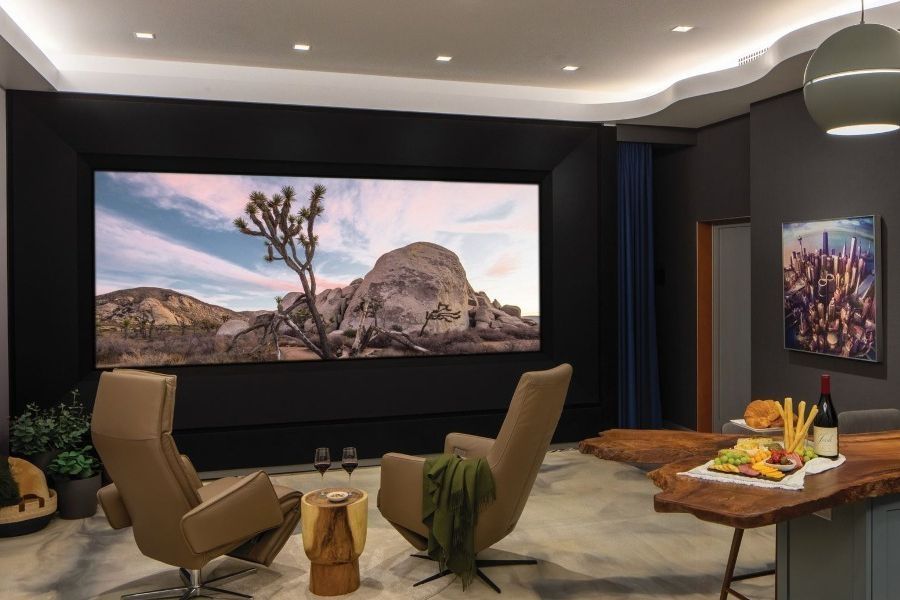
Light sensors like Crestron’s SolarSync have also been gaining prominence in the market. These devices can measure the color temperature and intensity of the light outside and then relay that information back to the control system, which adjusts the indoor lights accordingly. Depending on the saturation of natural lighting the system can even make decisions to increase or pare back artificial lighting.
At the end of the day, circadian lighting shouldn’t aim to replace natural light in buildings. It should aim to supplement and work with it, which is why it would be improper to talk about circadian lighting without mentioning window treatments.
During the day, shades can lower to help minimize solar glare while in the evening, they can keep out bright, intrusive exterior lighting. Not only does it play a strong role in triggering circadian responses, but it also provides tremendous visual comfort. When all tied together, lighting, shading, and control make it possible to create comprehensive circadian lighting systems that fit within the parameters required to provide tangible health benefits to home occupants.
Circadian Lighting vs. Human Centric Lighting
Chances are you’ve seen both names used somewhat interchangeably with one another. While they are very similar in terms of approach, it is worth noting circadian lighting and human-centric lighting are somewhat different. It’s like how all squares are rectangles but not all rectangles are squares. All circadian lighting is human-centric lighting but not all human-centric lighting is circadian lighting.
Circadian lighting is focused on that specific outcome of improving circadian rhythms through light entrainment. Human-centric lighting is more broadly focused on using light to enhance human performance, health and wellbeing in a space, so you can see where there’s a lot of crossover happening between the two terms.
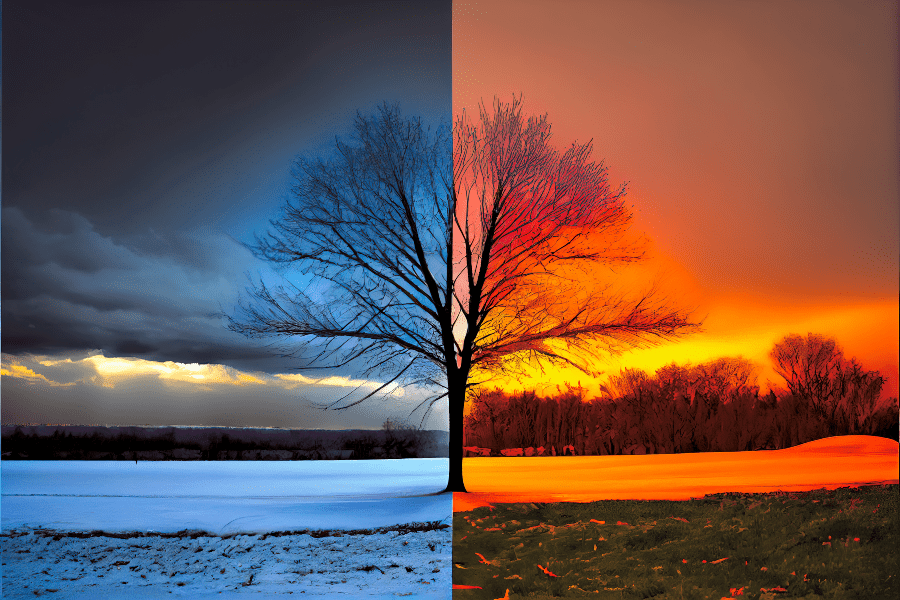
Where to Buy Circadian Lighting
True circadian lighting can be difficult to come across. Just because a light is color tunable does not mean that it is built for circadian lighting. There are, however, plenty of manufacturers that work to create true circadian lighting.
One of the biggest names in the industry right now is Lutron’s offering: Ketra. There’s also Vantage, which, while it doesn’t manufacture circadian lighting fixtures directly, partners with lighting manufacturers that do through its Lighting Fixture Alliance. There’s also BIOS, USAI, AiSPiRE, Coelux, Phillips Hue and Savant’s Cync. There’s also Kumux, which creates a circadian lighting control system specially tailored to commercial environments.
Where to Learn More About Circadian Lighting
What makes circadian lighting such an exciting offshoot of lighting is it’s one of constant evolution and refinement. Research is constantly being conducted into its applications, and manufacturers are using that research to better inform their products, which can then help supply a broad range of budgets and projects. One more recent example is how Samsung created its first circadian-effective TV using these principles.
Organizations focused on the development of healthier building environments, like the International WELL Building Institute and the Center for Active Design, are great resources for better understanding specific parameters around an effective circadian lighting system.
You also have industry consultants like Light Can Help You and Kaleidolight which, while not exclusively focusing on circadian lighting, can help integrators better understand this specific aspect of lighting and apply it in their work. There are also events like Lightapalooza that dedicate multiple days to education and exploration of better lighting principles and manufacturers that embody said principles.
Following the studies and works of Doctor Mariana Figuerio as well as exploring the resources available through the IES are additionally great ways to stay up to date on information regarding health outcomes based around human exposure to light in the built environment.
